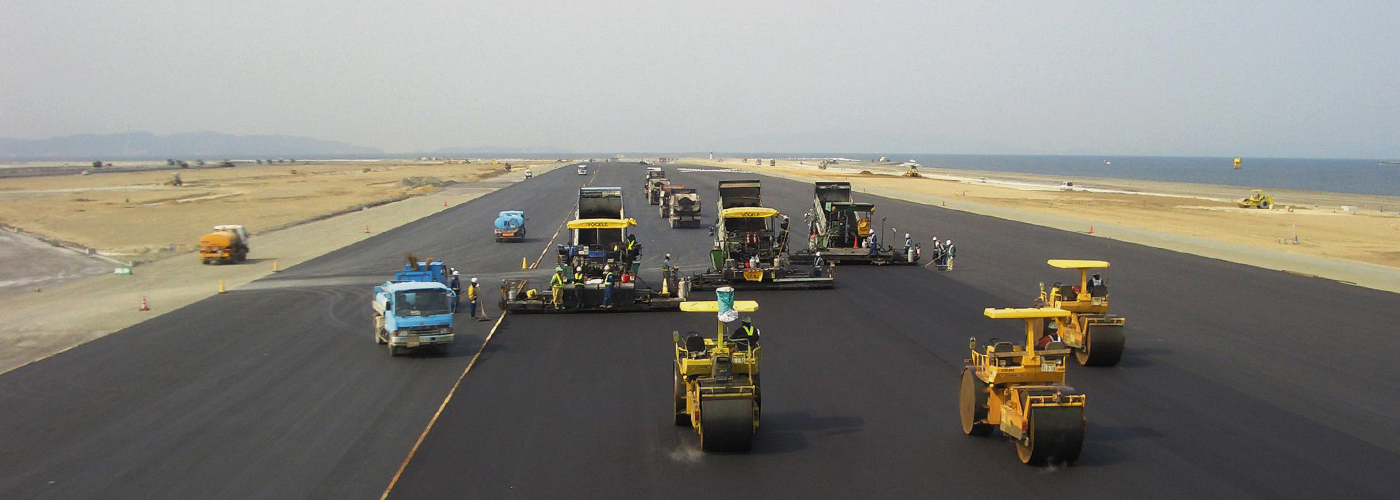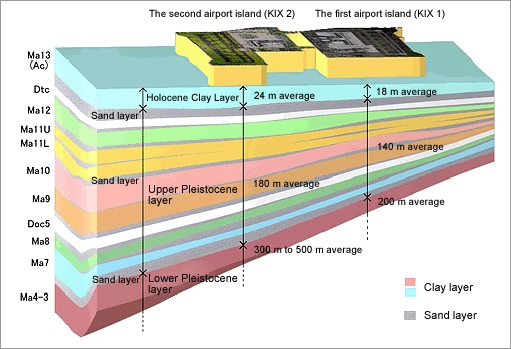
[KIX]
Ground condition of the seabed
A History of Earth’s Seabed Formation
The seabed under Kansai International Airport is made up of layers of sand and clay.
The clay layer at the surface of the formation is called the Holocene Layer, approximately 20 m in thickness. After this one comes the Pleistocene layer, consisting of alternating layers of hard clay and gravel, which altogether is hundreds of meters deep. The Pleistocene layer can be divided into upper and lower level parts. The hardness of the upper level is less than the lower level layers, such that the upper layers give a little when submitted to strong pressure.
The Holocene clay layer has accumulated since the end of the last Ice Age, about 10,000 years ago, to the present day. The Alluvial clay layer under KIX layer has accumulated over the past 10,000 years.
The Pleistocene layer accumulated in the fourth Pleistocene epoch, from about 2 million years ago to 10,000 years ago. This period was known as the Ice Age, when mammoths trod the earth, temperatures dropped and the water level decreased as the low temperatures turned water into glaciers. Conversely, after some time, the temperature rose, ice began to melt, and the water level increased during the Interglacial Ages. The range of the water level change was approximately 100m. The Osaka Bay has repeatedly shifted from sea, to lake, to land in cycles of tens of thousands to a hundred thousand years, as the water level changed.
The Seabed is Comprised of Layers of Sand and of Clay
Clay accumulates on the seabed when the ground is under water, and sand accumulates on the ground when the water level decreases and the ground emerges from underwater. Additionally, the movement of the earth's crust slowly lowered the seabed, increasing the depth of the Osaka Bay in Pleistocene times. As the Osaka Bay deepened, clay and sand accumulated on the floor of the seabed almost without exposure to strata erosion by rivers or rain.
As shown on the picture below, the Pleistocene formation of the Osaka Bay is comprised of alternating layers of clay and sand.

<The Details of Formation of the Seabed under Kansai International Airport>
 Measure against heavy rain
Measure against heavy rain Measure against heavy rain
Measure against heavy rain Customers who use Kobe Airport
Customers who use Kobe Airport